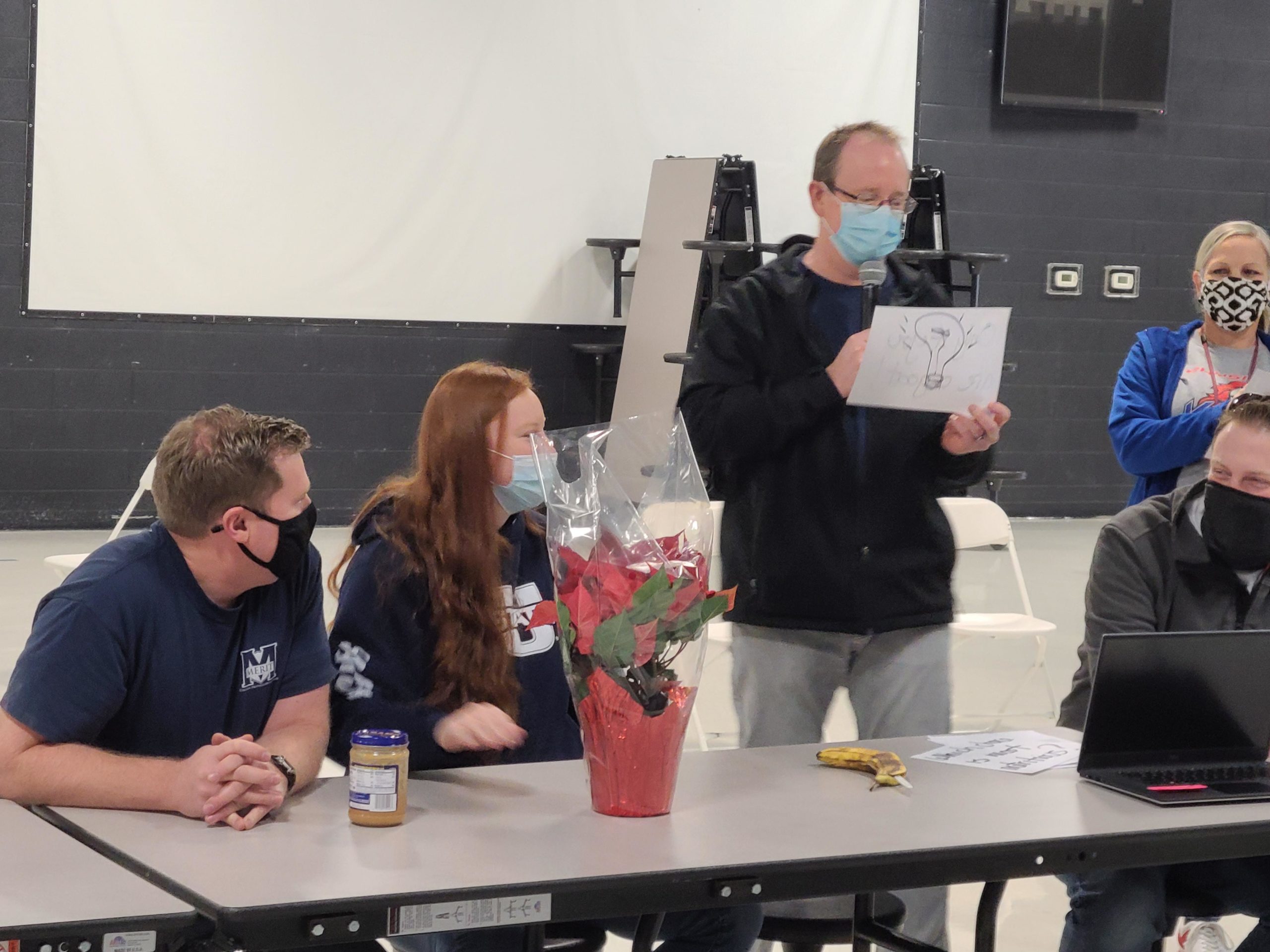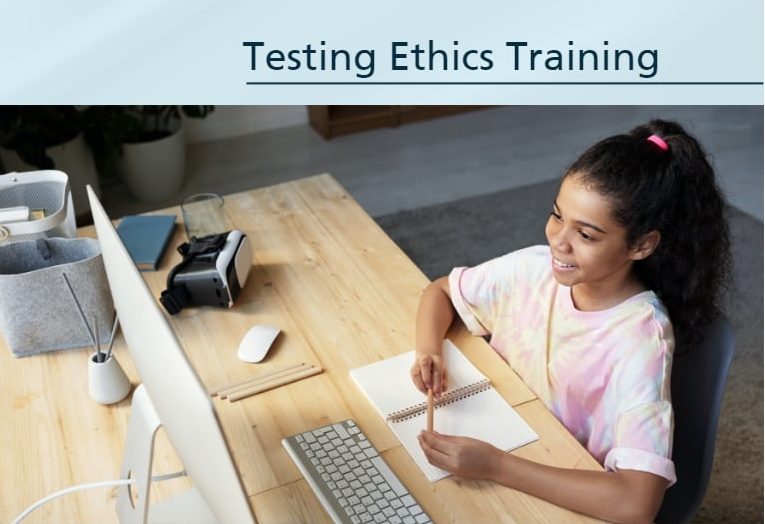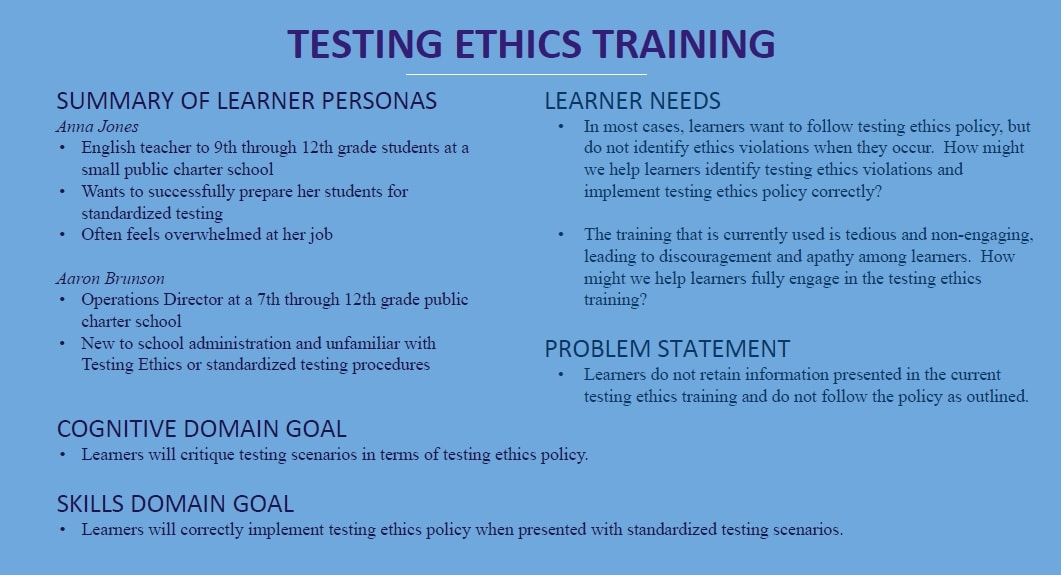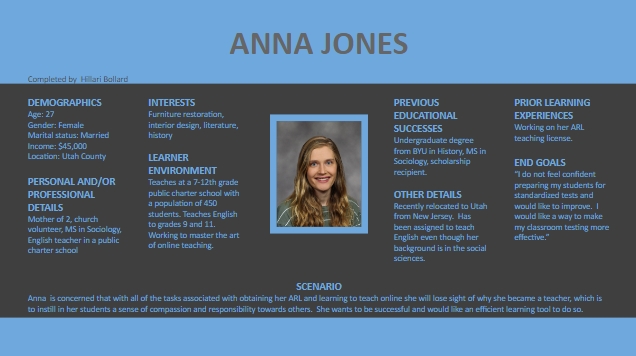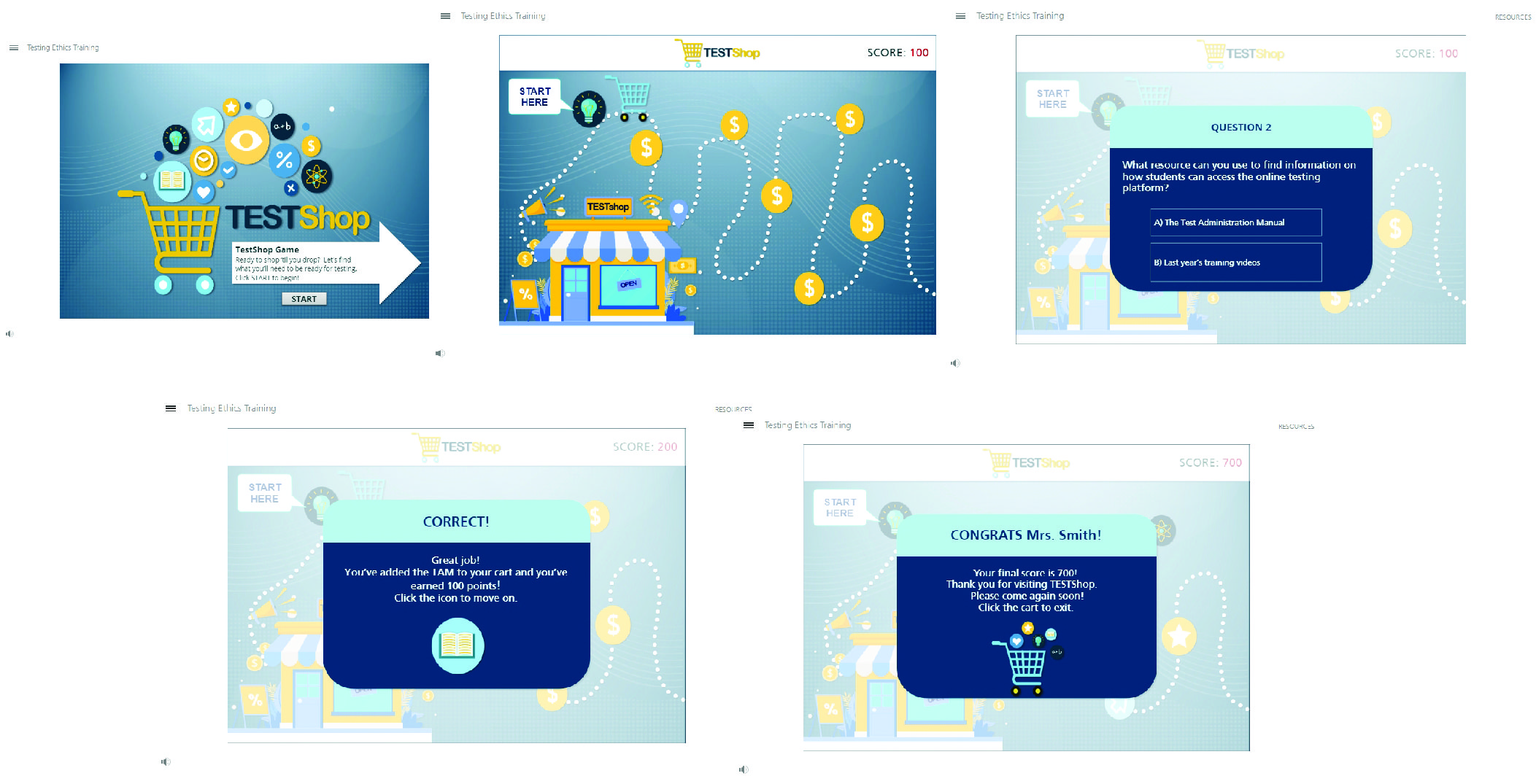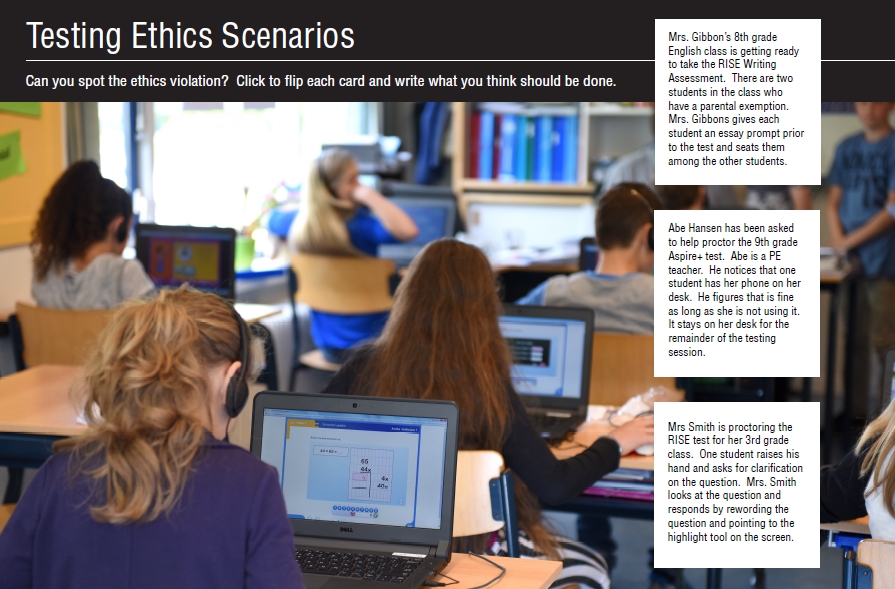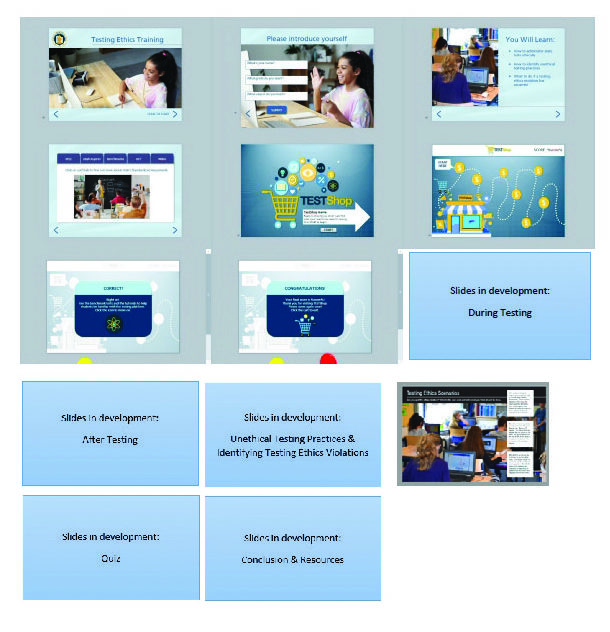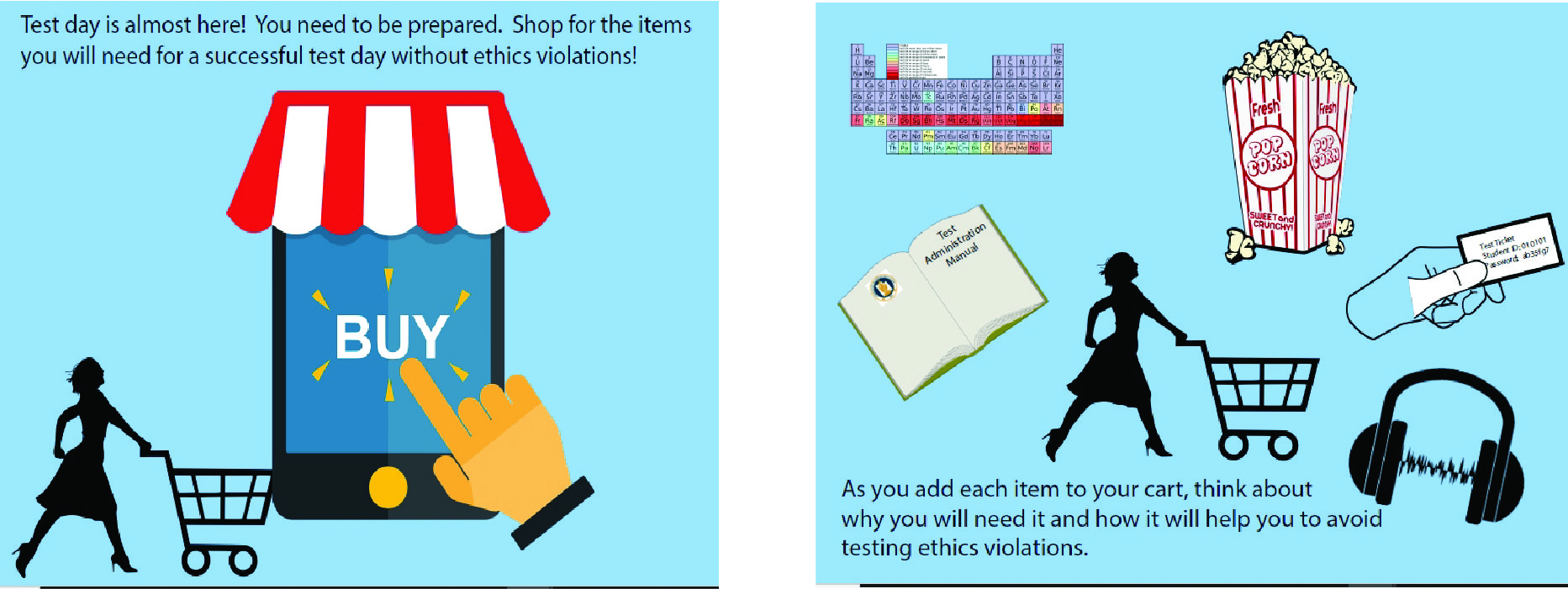Testing Ethics Training
e-Learning Development | Blended Learning | Instructior-led Training | LMS Administration | Gamification
A combination of e-Learning and Instructor-led Training (ILT) improved the results of a mandated annual professional development training for teachers at Merit Preparatory Academy
The Problem
Teachers at Merit Preparatory Academy were required to attend an annual training on testing ethics. The training was long and tedious. In addition, much of the information did not apply to all of the teachers. The general feeling towards the training was discouragement and apathy, which resulted in issues with annual standardized testing procedures.
The Solution
I designed a blended course consisting of an online module administered via Bridge LMS and an instructor-led professional development training. Teachers directly involved in standardized testing participated in both parts of the course, while those not involved in the administration of standardized tests took part only in the ILT. Both parts of the course focused on critical learning needs in addition to a more interactive and engaging training methods.
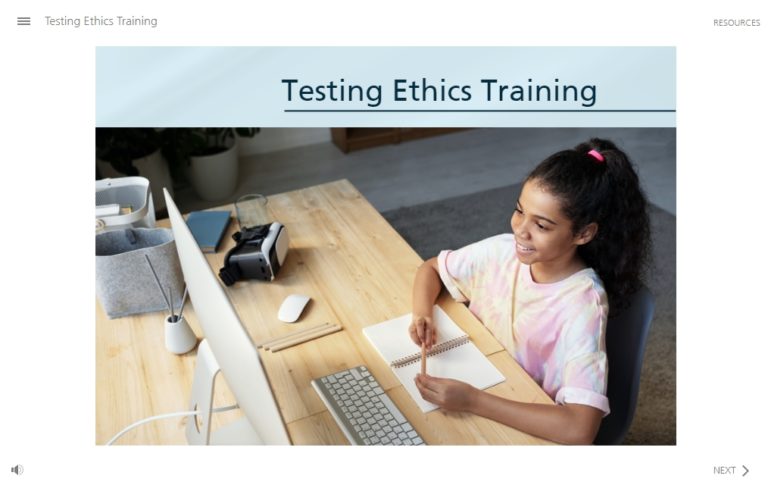
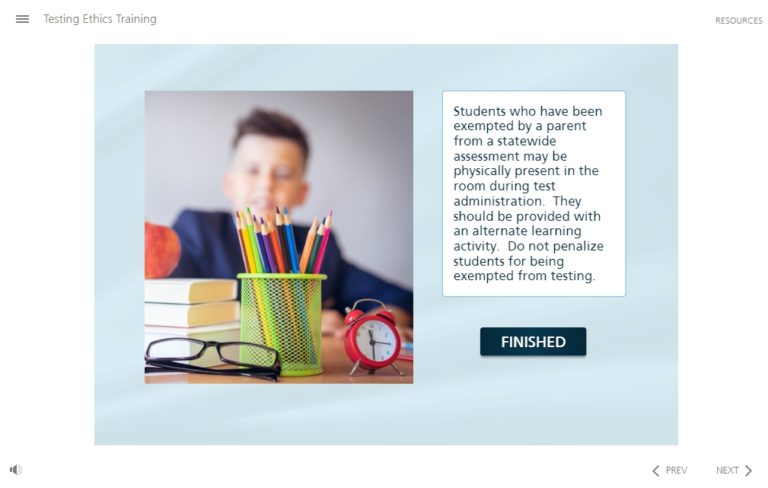
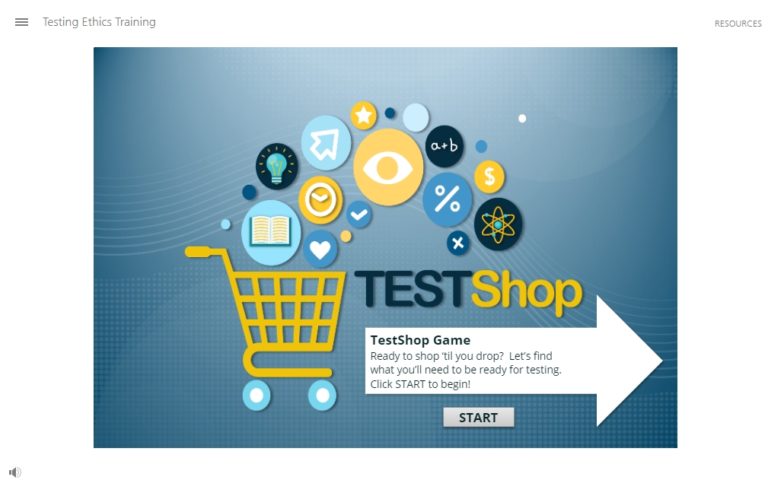
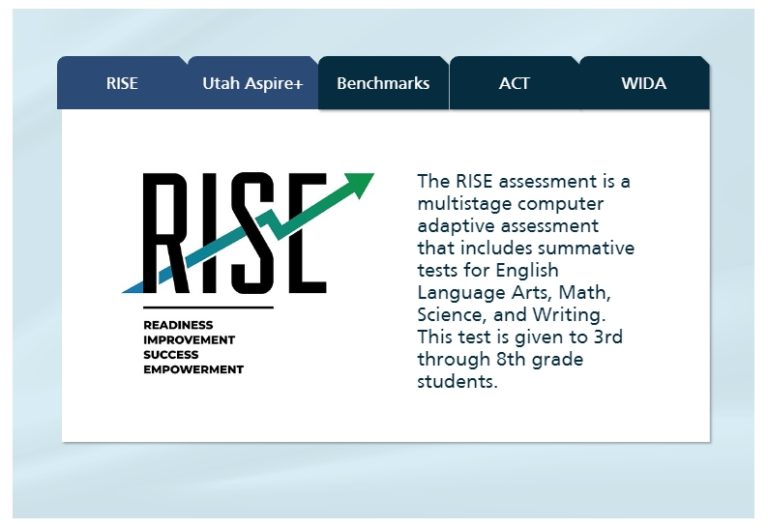
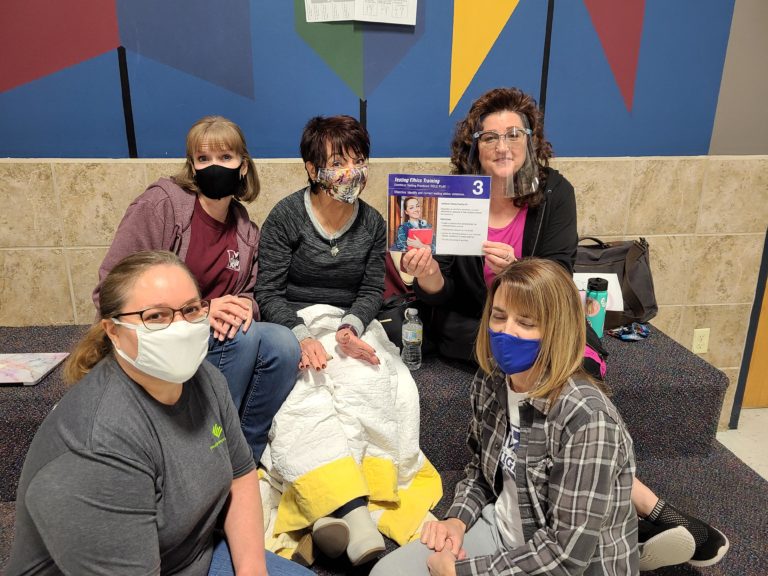
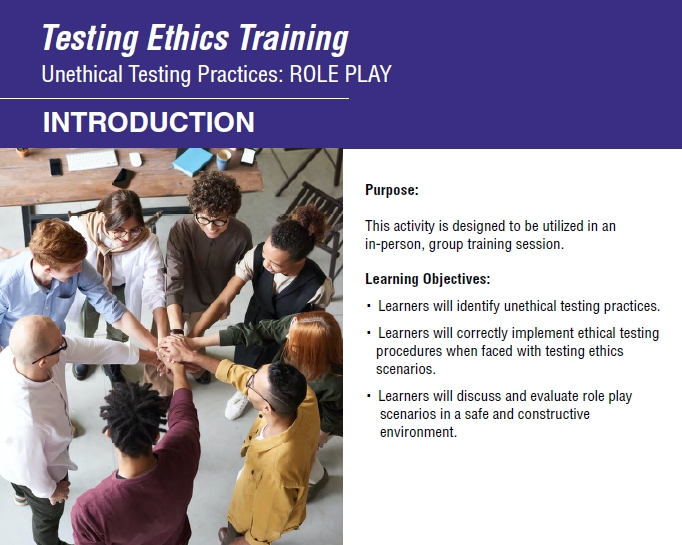
My Role
I was the sole instructional designer on this course. In addition, I was employed by the school as the Assessment Director at that time. The following is a list of development tasks that I completed:
- Developed learner personas
- Complelted a needs analysis, environmental analysis, and topic/task analysis
- Created prototypes
- Conducted user interviews
- Storyline course development
- Designed ILT materials
- Implemented the training via Bridge LMS
- Facilitated the ILT
A Look at the Process
I conducted a thorough Environment and Needs Analysis to help identify problems in the current training and to better understand the needs of the learners. Gaps in the current training program were identified by conducting observations and interviews with stakeholders and learners. A Content and Task Analysis was critical in defining these gaps and identifying the content for the new training program.
My focus was on the learners. How could I help learners fully engage in the training and take ownership of successfully implementing state testing procedures? Identifying learner goals was a priority in determining the most effective training methods to meet these needs.
Design Lessons
- Get to know the learner. On the surface learners displayed apathy toward the subject. But I learned that it wasn’t that they didn’t care, it was just that the training as established wasn’t applicable to everyone who was required to participate.
- Evaluate prototypes first. By conducting user tests on prototypes, I was able to identify what worked and what didn’t.
- SIMPLIFY. If something seems overly complicated, it probably needs to be taken down a notch.
